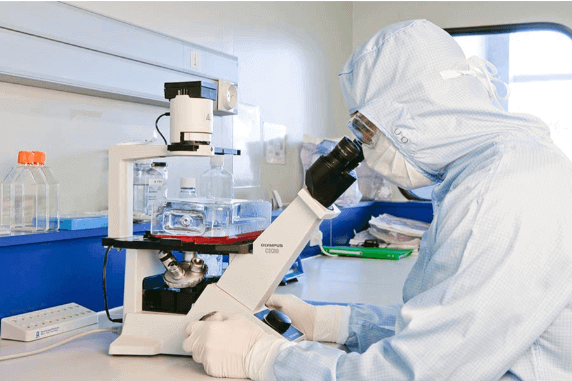Advances in Cirrhosis Stem Cell Therapy in 2024
التليف الكبدي, a chronic liver disease characterized by the replacement of healthy liver tissue with scar tissue, remains a significant global health concern. Traditional treatments focus on managing symptoms and slowing disease progression, but they do not reverse the damage. In recent years, العلاج بالخلايا الجذعية has emerged as a promising avenue for the treatment of cirrhosis, offering hope for regeneration of liver tissue. This article delves into the latest advances in العلاج بالخلايا الجذعية for cirrhosis in 2024, exploring the science, current research, and future directions.

Understanding Cirrhosis and Stem Cell Therapy
Cirrhosis results from long-term damage to the liver due to various causes such as chronic alcohol consumption, hepatitis B and C infections, and non-alcoholic fatty liver disease (NAFLD). The damage leads to fibrosis and impaired liver function. العلاج بالخلايا الجذعية aims to repair and regenerate damaged tissues using the body’s own cells or donor cells, offering a potential cure rather than just symptom management.
Types of Stem Cells Used
Several types of stem cells are being explored for cirrhosis therapy:
- الخلايا الجذعية المكونة للدم (HSCs): Derived from bone marrow, these cells have shown potential in liver regeneration by differentiating into various liver cell types.
- الخلايا الجذعية الوسيطة (اللجان الدائمة): Sourced from bone marrow, adipose tissue, and umbilical cord tissue, MSCs are known for their anti-inflammatory properties and ability to differentiate into hepatocyte-like cells.
- تتضمن الخلايا الجذعية المحفزة (iPSCs): These are reprogrammed adult cells that possess the ability to differentiate into any cell type, including liver cells.
Recent Advances in 2024
Improved Differentiation Techniques
One of the significant advances in 2024 is the refinement of techniques to differentiate stem cells into functional liver cells. Researchers have developed new protocols that increase the efficiency and purity of hepatocyte-like cells derived from stem cells, enhancing their therapeutic potential.
Enhanced Delivery Methods
Effective delivery of stem cells to the liver is crucial for the success of the therapy. في 2024, novel delivery methods, such as hydrogel-based scaffolds and nanoparticle carriers, have been developed to improve the homing and retention of stem cells in the liver. These methods protect stem cells from the hostile environment of the cirrhotic liver and enhance their integration into the tissue.
Genetic Engineering and CRISPR
Genetic engineering, particularly the use of CRISPR technology, has revolutionized العلاج بالخلايا الجذعية. في 2024, researchers are using CRISPR to edit genes within stem cells to enhance their regenerative capabilities and resistance to the fibrotic environment of cirrhotic livers. This approach not only improves the efficacy of the therapy but also reduces the risk of unwanted mutations and complications.
Clinical Trials and Real-World Applications
Several clinical trials are underway in 2024, investigating the safety and efficacy of العلاج بالخلايا الجذعية for cirrhosis. Early-phase trials have shown promising results, with patients experiencing improvements in liver function and reductions in fibrosis. These trials are crucial for establishing standardized protocols and gaining regulatory approval for widespread use.
Challenges and Future Directions
Despite the promising advances, several challenges remain in the development of العلاج بالخلايا الجذعية for cirrhosis:
- Immune Rejection: Ensuring that the patient’s immune system does not reject the transplanted stem cells remains a significant hurdle. Immunosuppressive strategies and the development of immune-compatible stem cell lines are areas of active research.
- Long-term Safety: Long-term studies are needed to assess the safety and efficacy of stem cell therapies, particularly concerning the risk of tumor formation and other complications.
- Scalability and Cost: Making stem cell therapies accessible and affordable for widespread clinical use is a critical challenge. Advances in manufacturing and standardization of stem cell production processes are essential for overcoming this barrier.
Conclusion
العلاج بالخلايا الجذعية represents a groundbreaking approach to treating cirrhosis, with significant advances made in 2024. Improved differentiation techniques, novel delivery methods, and the integration of genetic engineering are enhancing the therapeutic potential of stem cells. Ongoing clinical trials are crucial for translating these advances into real-world treatments. While challenges remain, the future of العلاج بالخلايا الجذعية for cirrhosis is promising, offering hope for a cure for millions of patients worldwide.
By addressing the underlying causes of liver damage and promoting regeneration, العلاج بالخلايا الجذعية has the potential to transform the management of cirrhosis and improve the quality of life for affected individuals. مع تقدم الأبحاث, the dream of a cure for cirrhosis moves closer to reality.
